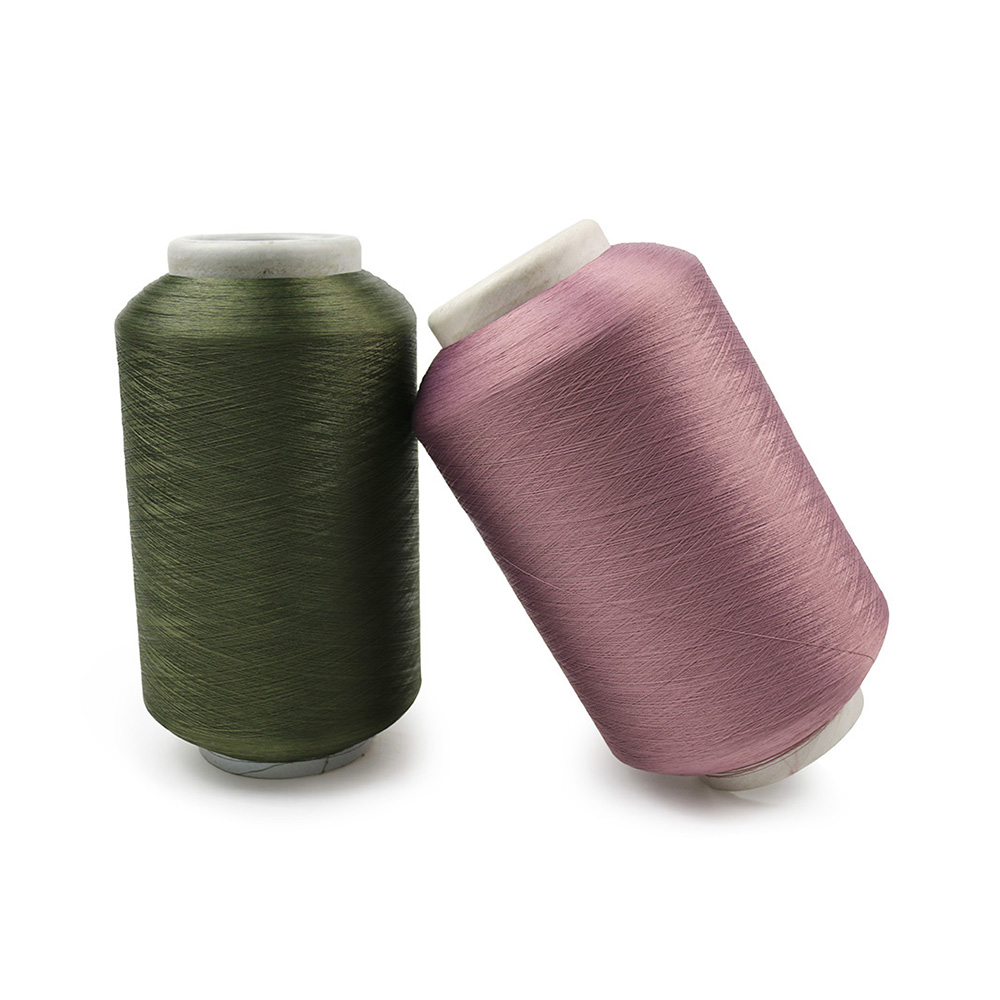If you are interested in some of our products, please feel free to visit our website or contact us for detailed information.

The elasticity of chemical fiber yarn significantly affects its performance in stretchable fabrics in several key ways:
Elastic chemical fibers such as spandex, elastane, or Lycra can stretch significantly, often up to five times their original length. This extraordinary elasticity allows fabrics to accommodate extensive movement without permanent deformation. When the tension is released, these fibers return to their original shape, a property known as recovery. This is crucial for applications where the material must repeatedly stretch and retract, such as in sportswear, swimwear, and compression garments. The high stretch and recovery properties ensure that these garments maintain their fit and functionality throughout their lifecycle, providing consistent performance and support.
The elasticity of chemical fiber yarns greatly enhances the comfort and fit of stretchable fabrics. These fibers allow garments to closely contour to the body, providing a second-skin sensation. This close fit reduces bulk and enhances freedom of movement, which is particularly beneficial in activewear and performance apparel. The snug fit also reduces friction against the skin, minimizing irritation and discomfort. This is essential for garments worn during physical activities, where ease of movement and minimal chafing are critical for performance and comfort.
Fabrics made with elastic chemical fibers exhibit excellent shape retention. Even after extensive use and repeated laundering, these fibers return to their original shape, preventing garments from becoming misshapen or saggy. This durability is particularly important in high-performance athletic wear and everyday clothing that undergoes frequent wear and wash cycles. The ability to maintain shape ensures that garments continue to provide a flattering fit and effective performance over time, enhancing their longevity and value.
Elastic chemical fibers are essential in providing support and compression in specialized textiles. In medical applications, such as compression stockings and support braces, these fibers offer controlled pressure to improve blood circulation and provide therapeutic benefits. In athletic wear, compression garments made from elastic fibers help stabilize muscles, reduce fatigue, and enhance athletic performance by improving oxygen flow and reducing muscle vibrations. This targeted support and compression are also beneficial for post-exercise recovery, helping to reduce soreness and speed up muscle recovery.
The inclusion of elastic fibers significantly enhances the overall stability and resilience of the fabric. These fibers help maintain the structural integrity of the fabric, ensuring that it stretches uniformly and recovers fully. This stability is crucial in preventing excessive stretching and distortion, which can compromise the garment's fit and appearance. Maintaining fabric stability also ensures that the functional properties of the fabric, such as breathability and moisture management, are preserved, ensuring consistent performance in various conditions.
Elastic chemical fibers provide designers with increased versatility and creative freedom. The ability to produce form-fitting garments that stretch and move with the wearer opens up new possibilities in fashion and functional apparel. Designers can experiment with complex patterns, cuts, and constructions that require flexibility without compromising fit and comfort. This versatility is particularly valuable in the development of performance wear, adaptive clothing, and fashion-forward designs, enabling innovative solutions that cater to diverse needs and preferences.
Fabrics containing elastic chemical fibers exhibit a high degree of resistance to wrinkling and creasing. The elasticity helps the fabric to rebound from compressive forces and bending, maintaining a smooth and polished appearance. This resistance to wrinkling is particularly beneficial for travel and active wear, where maintaining a neat and presentable look is important despite prolonged wear and movement. The reduced need for ironing or pressing also adds to the convenience and practicality of garments made from these fabrics.


 English
English Español
Español








